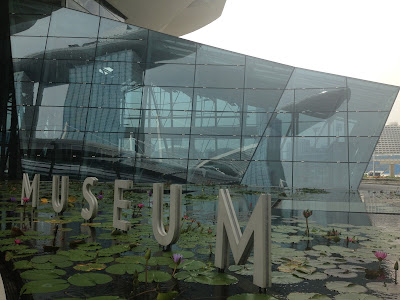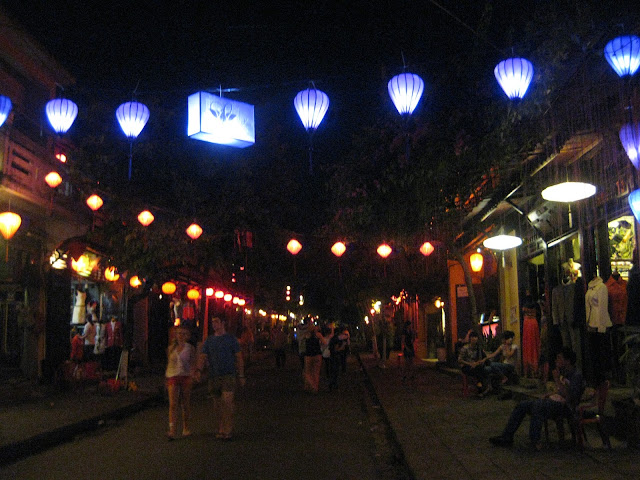How I got there
I have been to very few countries in Asia, thinking that I can visit the countries in my own backyard during short breaks. The problem is - I never liked to take short breaks and have always preferred to venture somewhere further outside Asia for a longer period or visit my family in Hong Kong. If only I had travelled more in Asia - maybe I would have saved a lot more money.
I decided to satisfy my wanderlust by choosing the cheapest air ticket (I excluded Malaysia) I could find online (sadly, I will have to wait for a few more years to go Korea). A return ticket from Singapore to Ho Chi Minh City cost US$140 (flying in Europe was even not as cheap!), a good hotel in the city (with breakfast, cable tv and WIFI) was US$26 per night for 2 people and a half-day tour was US$6. How good is that?
City
Formerly known as Saigon, Ho Chi Minh City's favourable location in the Mekong Delta boosted its commercial importance and made it the most important city politically in the southern part of Vietnam. Its rule changed hands many times - from the Khmer to Vietnamese, French, Americans, back to the Vietnamese puppet regime and finally the communists.
The city has many buildings built in the 1970s, greatly influenced by the French:
 |
| Notre Dame Cathedral |
 |
| Inside the General Post Office |
 |
| City Hall |
Historically, the most important building of the city is perhaps the Independence Palace (also known as the Reunification Hall). The French first built the residence for the governor at the site in 1868. It was later taken over by the Viet Congs (communist-led guerillas of South Vietnam) as Presidential Palace but was bombed by the Americans in 1962. In 1966, the current building by Roman Grand Prize winner, architect Ngo Viet Thu designed according to Chinese geomancy was completed. 9 years later, in 1975, the North Vietnamese Army crashed their tanks through the gates of the palace and overthrew the government that controlled the south of Vietnam. On the balcony, the victors waved their flags, signifying the reunification of the North and South of Vietnam.
 |
| Replica of tank that bulldozed the gates of the Independence Palace |
 |
| Independence Palace |
The Independence Palace is now used to host government meetings and banquets for foreign dignitaries. On other days, it is opened to the public and one can view the old commanding posts from the warring days and the current banquet rooms.
Water puppet theatre
The Vietnamese are famous for their water puppetry. A band that played traditional music instruments and do the voice-over sat on both sides of the stage while the poor puppeteers were submerged waist-deep in water behind the curtains.
I attended a performance by the Golden Dragon Water Puppet Theatre. The puppeteers gave an outstanding performance, through which one could guess what the band were singing in Vietnamese. It is amazing how 7 of them were squeezed behind the curtains and were able to manipulate the puppets fluidly around and above the stage without getting tangled up.
Video: water puppetry
The puppet show is very popular and it is advisable to buy the tickets in advance. Visit the free sculpture park next door while waiting for the show to start (the sculptures are interesting and on weekends, one can see students practising martial arts, plays, dance or playing badminton in the park).
 |
| Sculpture in park |
Cu Chi Tunnels
From Ho Chi Minh City, I joined a half-day tour to visit the Cu Chi Tunnels. First dug by the Viet Minhs in the jungle to fight the French, the tunnels were lated expanded the Viet Congs into 200km of sophisticated underground systems to fight against the American forces between the 1960s and 1970s. The tunnels incorporated communication rooms, hospitals, kitchens (where the smoke from cooking were cleverly deviated elsewhere to avoid detection by the enemies) and sleeping quarters.
 |
| We had to duck-walk in the tunnels that have been made taller and wider for tourists |
We saw how the Viet Congs camouflaged the entrances to the tunnels and set booby traps on the jungle foor and underground. If one managed to find the entrance and went into any of the narrow and claustrophobic tunnels, they would found themselves getting lost or die a slow and painful death in the traps.
 |
| Spikes used in booby traps |
It is fascinating how the tunnels were constructed without concrete and kept ventilated, while giving access to water without flooding the whole system. I wonder how the Viet Congs remember their way around the complicated network without falling into their own traps. It would also have been very depressing for anyone to live in such cramped and dark conditions.
Friends and food
I was able to meet up with a few of my colleagues based in our Ho Chi Minh City office and they treated me to deicious local food and coffee. Thanks mates!
 |
Seated: Valentine
Standing from R: Hai Binh, Hong Son |
People watching
You may want to sit near a traffic junction or a roundabout and watch the tourists trying to cross the road while having your meals. The roads in Ho Chi Minh City are congested with motorcycles which come from all sorts of directions different from the correct traffic flow. The tourists would wait and hesitate and the lights would change - it is most amusing to see how long it takes them to figure out they have the right of way (you can also learn a lesson or 2).
 |
| Light traffic |
Theoretically, to cross any road, one does not have to pay attention to the traffic lights nor the vehicles. Instead, just confidently but slowly step onto the road and walk slowly towards the other side of the road. Do not run and try not to walk into the path of a bus. The motorcycles would weave around you and you would be fine.
Technically, however, it is not all that easy to settle one's nerves, especially when the motorcycles move like a shoal of fish - you would find that there is not a chance for you to put a foot on the road without risking it being rolled over by 50 motorcycle wheels. Good luck!
 |
| Can you spot the couple trying to cross the round in a roundabout? |































































